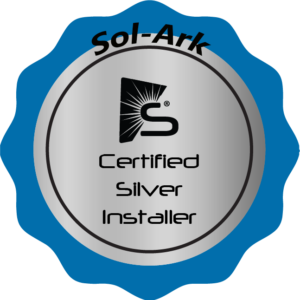Growing concerns for the depletion of the world’s natural resources and our future energy supply has increased the development and adoption of solar power.
The most critical advancement in the development of solar technology has been Photovoltaics, a solar energy system that uses semi-conductors to directly convert solar radiation into electricity.
The ‘photovoltaic effect’ – the ability to create an electrical current using solar rays – was initially discovered in 1839 by Alexandre Becquerel. Since then the technology has developed substantially, with modules becoming more and more efficient and cost-effective. Much of this research was done leading up to the 1970s and was commemorated by Jimmy Carter putting solar panels on the White House. They were taken down by Richard Nixon shortly thereafter, but the pioneering solar spirit lives on as people across the world continued to adopt solar panel systems.
Due to the continued adoption, companies have continued investing in the technology, which has caused the efficiency of most solar panels to increase to between 15-20% – the rest is lost as heat (in comparison, creating electricity from fossil fuels has an efficiency rate of ~40%). This has also resulted in a significant drop in price for solar panels. In the last decade alone, priced have decreased by over 80%.
How Photovoltaic Systems Work
Photovoltaic (PV) systems consist of a number of components. Cells, normally made from silicon, are arranged on a module, and multiple modules are strung together to create the desired system size. When exposed to sunlight these cells produce a small direct current of electricity, and when used en masse will generate a large amount of electrical power with no moving parts, noise or emissions. The power is then directed to an inverter, which changes the direct current into alternating current, which we use in our homes.
Owning A Photovoltaic System
Owning a PV system allows you to create your own power, giving you control over and savings on your electric bill, and ensuring your power is coming from a renewable source and not contributing to the pollution in our atmosphere.
Solar is great because once it’s on your roof, you can just forget it’s there. Systems require very little maintenance and mostly just chug along producing power and helping you live your best life. Many installers, including Solar Gain, offer net metering programs, which allow you and them to monitor the health of the system; but you don’t have to watch too closely – the system will send out alerts if it finds anything wrong.
How Does Solar Integrate With The Electrical Grid?
Traditionally, electricity comes from an electrical utility provider, which produces or purchases power and then distributes it to consumers in a specific region or state. The electricity is distributed along the electrical grid – the utility’s network of conductors, substations, and equipment that distributes electricity from its central hub to the consumer. The grid can span hundreds of miles from the power plants to thousands of homes and businesses.
Solar systems can work in tandem with or independent of the utility grid. Most systems are grid-tied, which means they are exchanging power freely with the electrical grid. During the day when your system over-produces, energy is sent out to your nearest neighbors, and you receive a credit from the utility company. At night, when your system does not produce energy, or when you’re using more electricity than your system is producing, you seamlessly take energy from the power grid.
Battery Back-Up For Your Solar Panel System
By pairing battery back-up solutions like the Tesla Powerwall to your solar energy system, you get added bonuses. First, you can directly use more of your solar power throughout the day and night – or, if your system is large enough, you can disconnect from the grid entirely. If you’re still connected, you can often save even more by shifting your load away from peak demand times – which reduced stress on the electrical grid and gives you savings if you’re on a Time of Use or Demand Charge rate. You’ll save even more with a solar battery system if your utility compensates solar homes and businesses with a discounted ‘solar export rate,’ instead of a direct exchange of power.
Battery back-up options are also great if you live in a place where the power goes out often. A stand-alone solar system will automatically shut off when the grid goes down in order to protect the utility personnel who are working diligently to get lines back up. A solar panel system paired with battery storage will seamlessly provide you with power, and you won’t even notice if the grid goes down.
Facts About PV Systems
- Multifunctional Land Use: PV systems can cover a wide area (1 Megawatt of Power= 6-8 Acres of Land). While they generate energy from the sun, they can also provide shade for parking structures and/ or shade crops that need to be protected from direct sunlight.
- Photovoltaic Cells Work On Cloudy Days: Contrary to popular belief, PV systems work while the sun is blocked by clouds, as the rays still penetrate and are then absorbed by the PV cells.
- Sunlight for an Hour = Sunlight for a Year: It’s calculated that the amount of sunlight on the earth within an hour’s time can provide enough energy for the world for an entire year.
- PV Cells Face South in the USA: In order to get optimal sunlight, PV cells should face south in the USA, as the equator lies south of the 50 states where the sun is most intense around the globe.
- The Sun is Powered by Hydrogen: The sun is currently powered by constantly burning hydrogen, and when it runs out of hydrogen, it will start to consume its supply of Helium.








